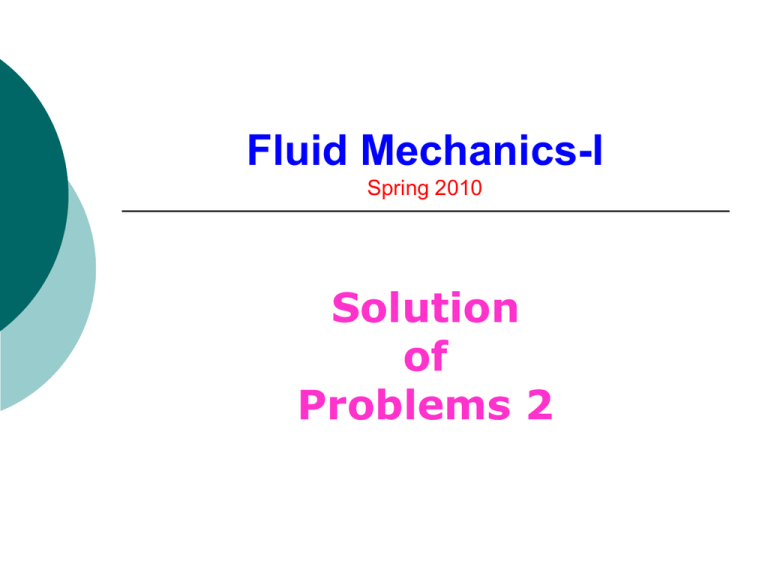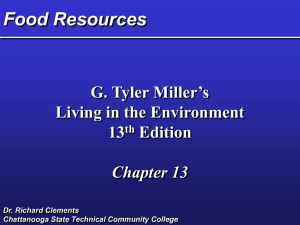Solution of PRoblems 3
advertisement

Fluid Mechanics-I Spring 2010 Solution of Problems 2 Problem 2.30 A mercury manometer is connected at two points to a horizontal 20°C water pipe flow. If the manometer reading is h =35 cm, what is the pressure drop between the two points? 2 Problem 2.31 In Fig. P2.31 all fluids are at 20°C. Determine the pressure difference (Pa) between points A and B. 3 Fig. P. 2.31 4 Problem 2.32 For the inverted manometer of Fig. P2.32, all fluids are at 20°C. If pB-pA=97 kPa, what must the height H be in cm? 5 Fig P.2.32 6 Problem 2.33 In Fig. P2.33 the pressure at point A is 25 lbf/in2. All fluids are at 20°C. What is the air pressure in the closed chamber B, in Pa? 7 Fig. P.2.33 8 Problem 2.35 Water flows upward in a pipe slanted at 30°, as in Fig.P2.35. The mercury manometer reads h=12 cm. Both fluids are at 20°C. What is the pressure difference p1-p2 in the pipe? 9 Fig.P.2.35 10 Problem 2.36 In Fig. P2.36 both the tank and the tube are open to the atmosphere. If L 2.13 m, what is the angle of tilt of the tube? 11 Fig. P.2.36 12 Problem 2.51 Gate AB in Fig. P2.51 is 1.2 m long and 0.8 m into the paper. Neglecting atmospheric pressure, compute the force F on the gate and its center-ofpressure position X. 13 Fig. P. 2.51 14 Problem 2.53 Panel ABC in the slanted side of a water tank is an isosceles triangle with the vertex at A and the base BC=2 m, as in Fig. P2.53. Find the water force on the panel and its line of action. 15 Fig. P.2.53 16 Problem 2.86 The quarter circle gate BC in Fig. P2.86 is hinged at C. Find the horizontal force P required to hold the gate stationary. The width b into the paper is 3 m. 17 Fig. P2.86 18 Problem 2.89 The tank in Fig. P2.89 contains benzene and is pressurized to 200 kPa (gage) in the air gap. Determine the vertical hydrostatic force on circular-arc section AB and its line of action. 19 Fig. P2.89 20 Problem 2.127 Consider a cylinder of specific gravity S < 1 floating vertically in water (S = 1), as in Fig. P2.127. Derive a formula for the stable values of D/L as a function of S and apply it to the case D/L = 1.2. 21 Fig. P.2.127 22 Problem 2.128 An iceberg can be idealized as a cube of side length L, as in Fig. P2.128. If seawater is denoted by S =1.0, then glacier ice (which forms icebergs) has S=0.88. Determine if this “cubic’’ iceberg is stable for the position shown in Fig. P2.128. 23 Fig. P2.128 24 Problem 2.129 The iceberg of Prob. 2.128 may become unstable if its width decreases. Suppose that the height is L and the depth into the paper is L but the width decreases to H < L. Again with S = 0.88 for the iceberg, determine the ratio H/L for which the iceberg becomes unstable. 25







